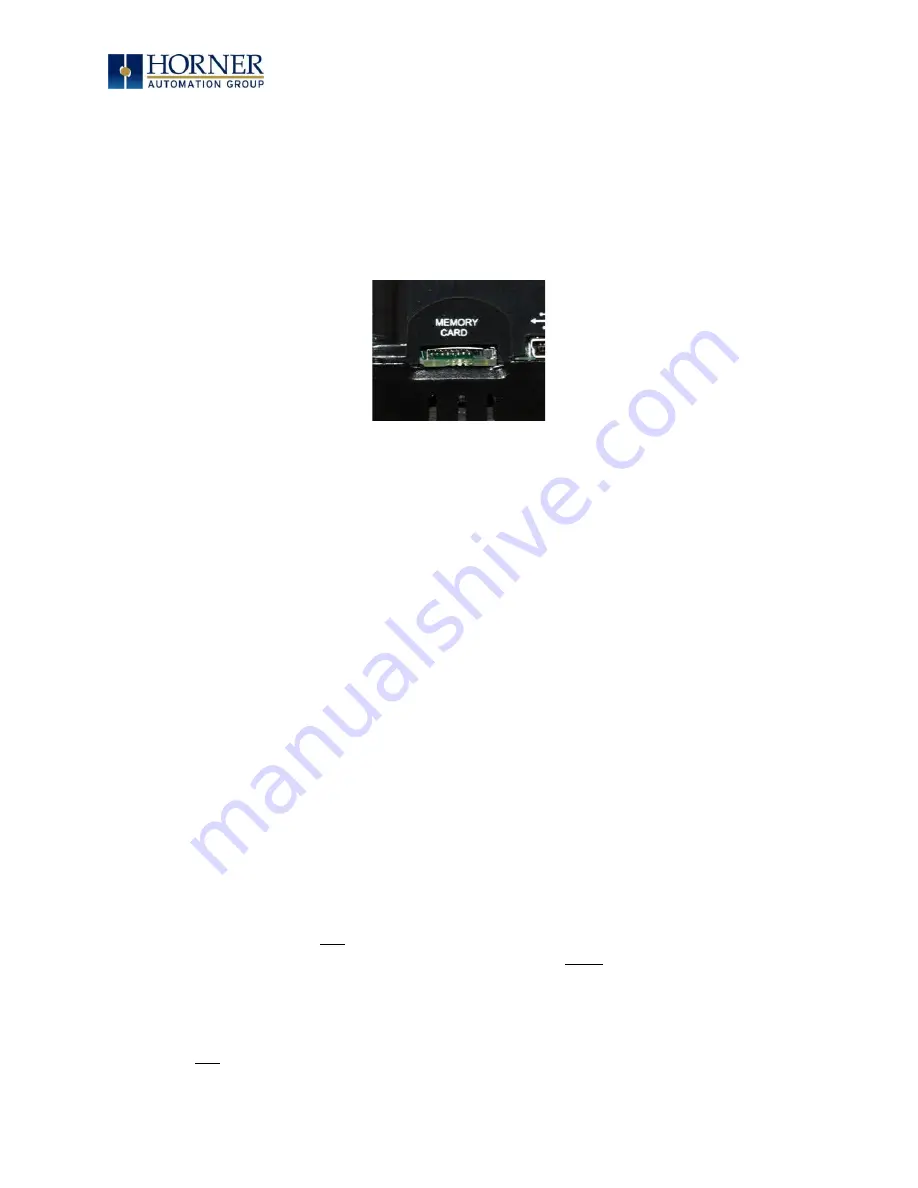
MAN0974-11-EN_XL7_UserManual
March 22
nd
, 2020
Page 152 | 195
CHAPTER 17: REMOVABLE MEDIA
17.1 Overview
All XL7 OCS models provide a Removable Media slot, labeled Memory Card, which supports
standard microSD flash memory cards. The microSD cards can be used to save and load
applications, to capture graphics screens and to log data for later retrieval.
Figure 17.1
–
Removable microSD Memory Card Slot
17.2 microSD Cards
When the microSD card format was introduced, it was originally called TransFlash. Cards labeled
either microSD or TransFlash, with up to 32GB of flash memory, are compatible with the XL7
OCS Memory slot (larger sizes were not tested at time of publication).
The Memory slot is equipped with a “push
-in, push-
out” connector and a
microSD card can be
safely inserted into the Memory slot whether the XL7 OCS power is On or Off.
To install a microSD card:
Align its 8-pin gold edge connector down, facing the front of the XL7
OCS unit; then carefully push it all the way into the Memory slot. Ensure that it clicks into place.
To remove the microSD card
: Push in on the top of the card gently to release the spring. The
card pops out for removal.
17.3 microSD File System
The microSD memory card slot uses the PC-compatible FAT32 File System. This means that a
PC, with a microSD-compatible card reader, can read files that have been written by the XL7
OCS and can write files that can be read by the XL7 OCS.
However, the XL7 OCS does not support long filenames, but instead implements the 8.3
filename format. This means that all file and directory names must consist of up to eight (8)
characters, followed by an optional dot, and an optional extension with up to three (3)
characters.
Directories and sub-directories can be nested up to 16 levels deep as long as each pathname
string does not exceed 147 characters.
















































